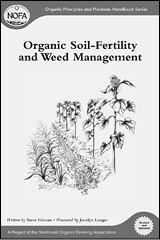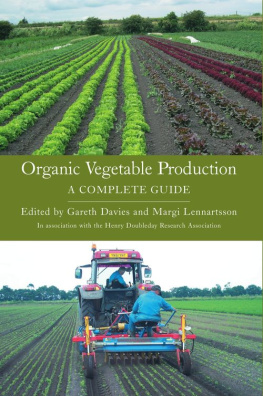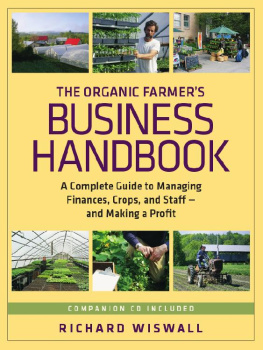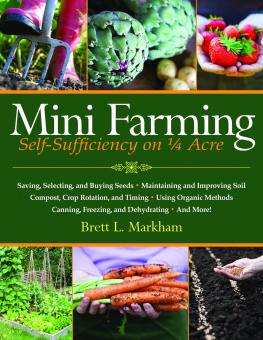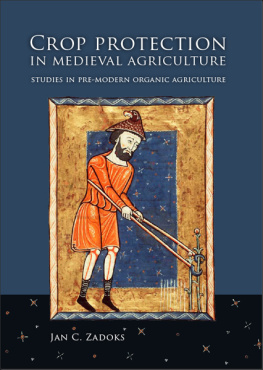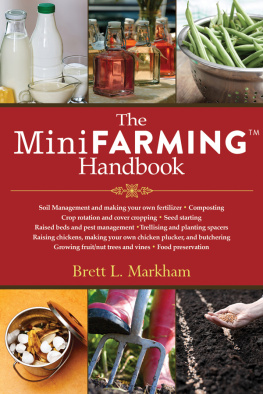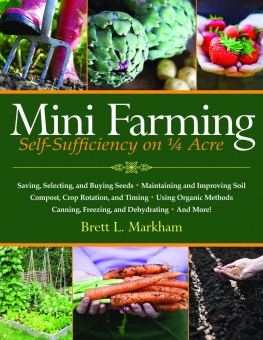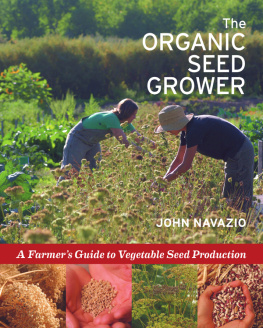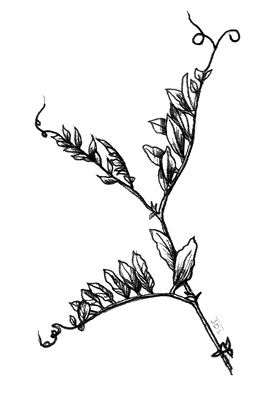
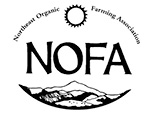
Organic Principles and Practices Handbook Series
A Project of the Northeast Organic Farming Association
Crop Rotation and Cover Cropping
Soil Resiliency and Health on the Organic Farm
Revised
Seth Kroeck
Illustrated by Jocelyn Langer
Chelsea Green Publishing
White River Junction, Vermont
Copyright 2004, 2011 by the Northeast Organic Farming Association Interstate Council.
All rights reserved.
No part of this book may be transmitted or reproduced in any form by any means without permission in writing from the publisher.
Originally published in 2004 as Soil Resiliency and
Health: Crop Rotation and Cover Cropping on the
Organic Farm.
Editorial Coordinator: Makenna Goodman
Project Manager: Bill Bokermann
Copy Editor: Cannon Labrie
Proofreader: Helen Walden
Indexer: Peggy Holloway
Designer: Peter Holm, Sterling Hill Productions
Printed in the United States of America
First Chelsea Green printing March, 2011
10 9 8 7 6 5 4 3 2 1 11 12 13 14
Our Commitment to Green Publishing
Chelsea Green sees publishing as a tool for cultural change and ecological stewardship. We strive to align our book manufacturing practices with our editorial mission and to reduce the impact of our business enterprise in the environment. We print our books and catalogs on chlorine-free recycled paper, using vegetable-based inks whenever possible. This book may cost slightly more because we use recycled paper, and we hope youll agree that its worth it. Chelsea Green is a member of the Green Press Initiative, a nonprofit coalition of publishers, manufacturers, and authors working to protect the worlds endangered forests and conserve natural resources. Crop Rotation and Cover Cropping was printed on Joy White, a 30-percent postconsumer recycled paper supplied by Thomson-Shore.
Library of Congress Cataloging-in-Publication Data
Kroeck, Seth.
Crop rotation and cover cropping : soil resiliency and health on the organic farm / Seth Kroeck ; illustrated by Jocelyn Langer.
p. cm. -- (Organic principles and practices handbook series)
A Project of the Northeast Organic Farming Association.
Originally published: Barre, MA : Northeast Organic Farming Association Interstate Council, 2004.
Includes bibliographical references and index.
ISBN 978-1-60358-345-9
1. Crop rotation--United States. 2. Cover crops--United States. 3. Organic farming--United States. I. Langer, Jocelyn. II. Title. III. Title: Soil resiliency and health on the organic farm. IV. Series: Organic principles and practices handbook series.
S603.K76 2011
631.452--dc22
2010051157
eISBN: 9781603583466
Chelsea Green Publishing Company
Post Office Box 428
White River Junction, VT 05001
(802) 295-6300
www.chelseagreen.com
Best Practices for Farmers and Gardeners
The NOFA handbook series is designed to give a comprehensive view of key farming practices from the organic perspective. The content is geared to serious farmers, gardeners, and homesteaders and those looking to make the transition to organic practices.
Many readers may have arrived at their own best methods to suit their situations of place and pocketbook. These handbooks may help practitioners review and reconsider their concepts and practices in light of holistic biological realities, classic works, and recent research.
Organic agriculture has deep roots and a complex paradigm that stands in bold contrast to the industrialized conventional agriculture that is dominant today. Its critical that organic farming get a fair hearing in the public arenaand that farmers have access not only to the real dirt on organic methods and practices but also to the concepts behind them.
About This Series
The Northeast Organic Farming Association (NOFA) is one of the oldest organic agriculture organizations in the country, dedicated to organic food production and a safer, healthier environment. NOFA has independent chapters in Connecticut, Massachusetts, New Hampshire, New Jersey, New York, Rhode Island, and Vermont.
This handbook series began with a gift to NOFA/Mass and continues under the NOFA Interstate Council with support from NOFA/Mass and a generous grant from Sustainable Agriculture Research and Education (SARE). The project has utilized the expertise of NOFA members and other organic farmers and educators in the Northeast as writers and reviewers. Help also came from the Pennsylvania Association for Sustainable Agriculture and from the Maine Organic Farmers and Gardeners Association.
Jocelyn Langer illustrated the series, and Jonathan von Ranson edited it and coordinated the project. The Manuals Project Committee included Bill Duesing, Steve Gilman, Elizabeth Henderson, Julie Rawson, and Jonathan von Ranson. The committee thanks SARE and the wonderful farmers and educators whose willing commitment it represents.
Contents
The author would like to acknowledge the extensive research and trials done by many talented authors and farmers in the Northeast. A handful of farmers contributed directly to this manual through interviews and correspondence and their acknowledgment here is in thanks for their generous advice during the busy summer months. These farmers include Dan Kaplan, Brookfield Farm; Julie Rawson, Many Hands Farm; Jean-Paul Courtens, Roxbury Farm; Eileen Droescher, Ol Turtle Farm; Jim Crawford, New Morning Farm; and Dave Colson, New Leaf Farm.
What is a successful organic farm? Is it one that meets the bottom line? Is it one with relatively weed-free fields, or maybe a steady increase in soil fertility? Does it produce flawless crops, unblemished by disease and pests? Most growers would say yes to each of these questions and maybe add another two or three benchmarks of their own. With a little thinking the list can get pretty long, and the thought of answering each question individually for your farm might be overwhelming. The trick to keeping your head on straight and getting through the days work is tying many of these objectives together with one tool: a rotation plan. The goal of this handbook is to outline the benefits and describe how to create good crop-rotation practices, including the use of cover crops, for northeast organic farms.
Eight years ago I began working on a small organic farm in California as an apprentice. Fueled by enthusiasm more than knowledge, I moved to the Northeast the following season and became a hired hand on a farm in Massachusetts. Working from early spring until the ground began to freeze in the fall, I was intrigued by the quick succession of crops, awakening slowly, peaking, then withering gradually, all in the space of six or seven months. This cycle of short, intense growing seasons followed by cold winters seemed to be tied together only by the rotation plan we followed and the focus of the farmers I was working for, who kept one eye on the future.
I began to study different rotations while working on a succession of northeast farms in the following seasons. Every farmer had a different perspective on what made a farm successful as well as a particular aspect of the operation that he did with special commitment. I had the best experience and learned the most from the farmers who were committed to organizing their operations from top to bottom and understanding every detail to the point that they could answer almost any question. Invariably these were the growers who had also devised crop-rotation systems that addressed fertility goals for the farm, maximized the health and diversity of their fields, and found a manageable compromise between a strict rotation and making a profit.


